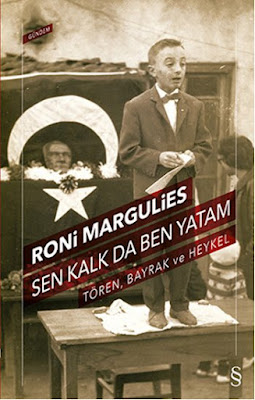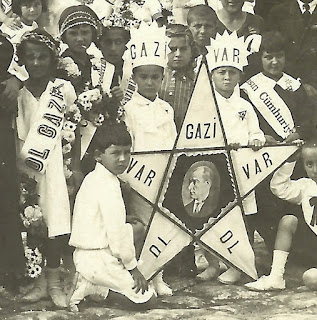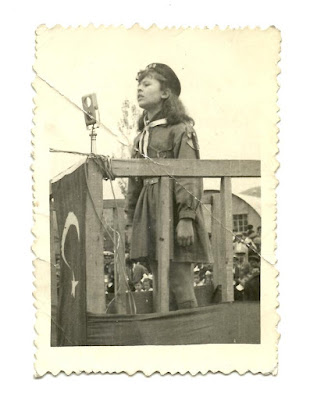 Mavi Boncuk |
Mavi Boncuk | Sundance 2018 The World Cinema Grand Jury Prize: Dramatic
Presented by Ruben Ostlund to: Butterflies / Turkey (Director and screenwriter: Tolga Karaçelik, Producers: Tolga Karaçelik, Diloy Gülün, Metin Anter) — In the Turkish village of Hasanlar, three siblings who neither know each other nor anything about their late father, wait to bury his body. As they start to find out more about their father and about each other, they also start to know more about themselves.Sundance Institute showcases bold, independent storytelling at the 2018 Sundance Film Festival, announced feature films selected across all categories. The Festival hosts screenings in Park City, Salt Lake City and at Sundance Mountain Resort, from January 18–28.
Mavi Boncuk |
WORLD CINEMA DRAMATIC COMPETITION Twelve films from emerging filmmaking talents around the world offer fresh perspectives and inventive styles and includes Karacelic’s upcoming third feature “Butterflies,” which is in the Antalya Film Forum’s Work in Progress platform, is a comedy of sorts prompted by the death of the director’s late uncle Mazhar Candan, who was a poet.
Tolga Karacelik, was born in Istanbul in 1981. He got a law degree in Turkey before moving to New York to study film, after writing some short stories and poems. His 2010 first feature “Toll Booth,” about a Turkish toll-station worker with a vivid imagination, scored critical kudos on the international fest circuit. He second film “Ivy,” set aboard a stranded cargo ship, premiered at Sundance in 2015, was shown at more than 30 festivals and scored multiple nods.
Kelebekler / Butterflies Teaser 2 from Karacelik Film on Vimeo.
World Premiere
In competition SUNDANCE Butterflies / Turkey (Director and screenwriter: Tolga Karaçelik, Producers: Tolga Karaçelik[1], Diloy Gülün[2], Metin Anter[3])
In the Turkish village of Hasanlar, three siblings who neither know each other nor anything about their late father, wait to bury his body. As they start to find out more about their father and about each other, they also start to know more about themselves. Cast: Tolga Tekin, Bartu Küçükçağlayan, Tuğçe Altuğ, Serkan Keskin, Hakan Karsak.
Close-up of an astronaut’s face. The astronaut is Cemal. Kenan dubs home videos for a living. In a classroom, kindergarten teacher Suzan weeps frantically. They are the sons and daughter of Mazhar. Now, after being 30 years apart, their father calls them back home to their village of Hasanlar. They don’t know why. When they arrive to Hasanlar, they realise that their father is dead and in his will he asks to be buried when the butterflies come to the village to die; one of the many strangeness of this village. Three siblings who neither know each other nor anything about their father will have to kill time in this village while waiting for the time of the butterflies. As they start to find out more about their father and about each other, they also start to know more about themselves.
DIRECTOR'S STATEMENT
Mazhar is dead; Mazhar Candan was my uncle and a poet, he died. My mother will die, my grandmother will die, my father will die, I will die. They’re still alive, I’m still alive, Mazhar Candan was my uncle and a poet and he died. He made me enjoy Odyssey when I was 9 years old. We took a journey through the kingdoms which Herodotus told about. When I was 11, he introduced me with Mayakovski and Yesenin. When I was 13, he said “Aysel, go away, I’m not the one for you”. My favorite poem of his started as “The sun sets, “maestro” silenced everyone with a shaky voice, holding one hand up like an actor”. Everyone remained silent and listened to him as he talked. As far back as I can remember, he used to say “this is my last year”. He said this for 20 years. That scared me when I was a kid; later on I just smiled it just made me smile. He wouldn’t die and I would smile. Until three years ago. I didn’t become aware of his death. One day my maternal uncle invited me over for lunch, saying “Mazhar and I are waiting for you”. I saw my maternal uncle and Mazhar, and sat across them. As I lifted my head up, I saw it was Hasan not Mazhar sitting next to my uncle. That day I realized Mazhar had died. I felt a knot in my throat, I could not breathe. I left the table without saying anything. I misheard him. He said Hasan, I heard Mazhar. I dragged myself to the street and cried for Mazhar for the first time, that day. When I went home I started thinking about death. Mazhar was gone and it hurt me. I pictured in my mind the faces of everyone I loved. One by one, I made them say “this is my last year” in my head. Then I sent them all to Hasanlar Village. This is how Hasanlar Village came to be and gave birth to its characters. I’m 35 years old. I feel like death is still far away. While I still feel stronger than death, I wanted to write a comedy where death is a character but not significant enough to be the lead. At Mazhar’s funeral I gave a speech and said “He always wanted to be an underground poet; he finally is”. No one laughed, but I thought it was funny. And I’m sure Mazhar was there and he also found it funny.
I wrote this movie to make Mazhar smile.
[1] TOLGA KARAÇELİK directed two feature films and several award winning shorts. His debut film Toll Booth screened on festivals around the world winning thirteen awards including best first film, best actor and best cinematography at Turkey’s important film festival Golden Orange. The movie was screened at prestigious venues such as MOMA New York and Smithsonian. His second film Ivy premiered in Sundance and was shown at more than thirty festivals so war including prestigious festivals like Toronto, Karlovy Vary, Sao Paolo, Sydney. Ivy had been awarded more than 20 awards world wide including Best Film at East End Film festival of London and Best Film, Best director, Best script, Best Actor at Golden Orange and Best director and best actor at Adana Film Festival. Tolga Karaçelik was jury at Karlovy Film Festival’s East West Competition 2016.
[2] DİLOY GÜLÜN was born in Istanbul, graduated from Istanbul University Conservatory Violin department in 1988, received her BA degree from Bogazici University Economics Department in 1992 and Diplôme d’accès aux études universitaires from Sorbonne Paris 1 in 1995. She started working as production assistant in IFR in 1996. In 2001, she produced Ahmet Ulucay’s “Making Boats out of Watermelon Rinds” which won 8 awards in several international festivals. She founded Karma Films in 2003 and line produced several feature films including “Inferno” (Ron Howard / Sony Pictures), Taken 2 (Olivier Megaton / Europacorp), The Reluctant Fundamentalist (Mira Nair / Cine Mosaic), The International (Tom Tykwer / Sony Pictures), Narrow Frame of Midnight (Tala Hadid / Autonomous UK) and many others as well as documentaries and over 200 commercials. For more information: www.karma-films.com [*]
[3] METİN ANTER started his career as director of Trimark Pictures International Production and Sales between 1996-2000. He settled in Turkey and founded Chantier Films in 2001 in the field of cinema film production and distribution. While bringing foreign productions to Turkey, Chantier Films has always aimed to offer high quality and successful productions to filmlovers and to undertake production of movies which will bring sound both in our country and abroad. His producer & distributor credits include Sofra Sırları/2017, Housewife/2017, Mihrez: Cin Padişahı/2015, Oh My God /2009, Son Buluşma/Last Meeting/2007
[*] KARMA Films | Contact ADDRESSNecati Cumali Sok. Pinar Apt. A Blok No:34 D.8 Akatlar - Istanbul / TURKEY OFFICE+90 212 352 7099 MOBILE+90 532 441 7732 EMAIL info@karma-films.comEMAILdiloy@karma-films.com





















































